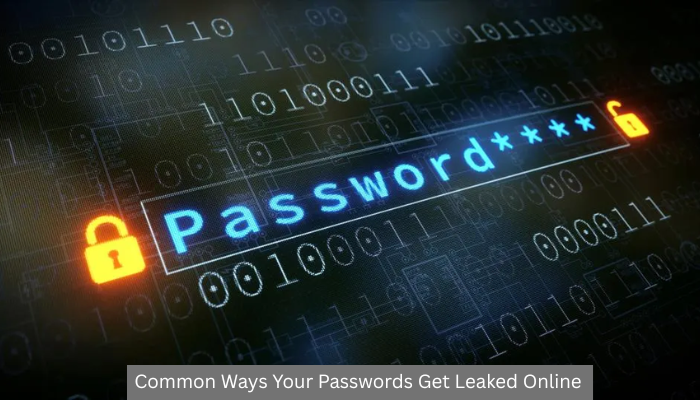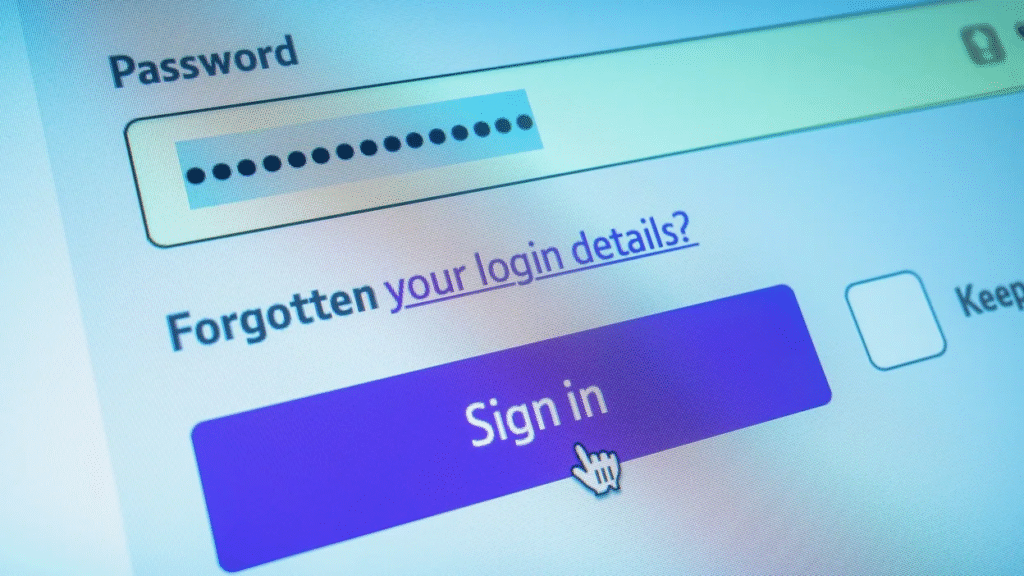Common Ways Your Passwords Get Leaked Online
- June 23, 2025
- 0
In today’s digital world, most of our personal and professional information is stored online. From banking to social media, emails to shopping accounts, everything is protected with one
In today’s digital world, most of our personal and professional information is stored online. From banking to social media, emails to shopping accounts, everything is protected with one

In today’s digital world, most of our personal and professional information is stored online. From banking to social media, emails to shopping accounts, everything is protected with one vital layer: passwords. However, when these passwords get leaked, they open the door to serious threats like identity theft, financial fraud, and data loss.
Cybercriminals are constantly evolving their techniques to steal your login credentials. They use a mix of deception, technical tools, and security loopholes to access your accounts without your permission. Understanding how passwords get leaked is the first step toward safeguarding your digital identity.
Let’s explore some of the most common methods hackers use to steal your passwords — and how you can protect yourself from becoming a victim.

Phishing is one of the most widespread and successful methods used by hackers. In a phishing attack, you receive an email, message, or website link that appears to be from a trusted source — such as your bank, an e-commerce platform, or a social media site. These fake communications are cleverly designed to look authentic and often include urgent requests like:
Once you click the malicious link and enter your password, it is directly sent to the hacker — not your real service provider. Victims often don’t realize they’ve been tricked until it’s too late.
Example: You receive an email that looks exactly like it came from your bank, asking you to log in and confirm a suspicious transaction. The link opens a website that looks identical to your bank’s login page. But when you enter your details, they are captured by the attacker.
Data breaches happen when hackers infiltrate the servers of large organizations and steal their stored user data. These breaches can expose the usernames, email addresses, and passwords of millions of people at once.
If you’ve created an account on a platform that later suffers a data breach, your credentials may be leaked and sold on the dark web. Hackers can then use these credentials to try logging into other websites, especially if you use the same password across multiple platforms.
High-profile examples: LinkedIn, Yahoo, Facebook, and several financial and healthcare services have all experienced major breaches, compromising user data on a massive scale.
Keyloggers are a type of malware or spyware that record everything you type on your keyboard, including your login information. Once installed on your device, a keylogger silently monitors your activity and sends the collected data to the hacker — without your knowledge.
These malicious tools often sneak into your system when you:
Keyloggers are particularly dangerous because they can bypass even secure websites. No matter how strong your password is, if it’s being recorded as you type, it’s vulnerable.
Brute force is a technique where hackers use automated software to try every possible combination of characters until the correct password is found. This method is especially effective when users choose weak or common passwords like:
The easier your password is to guess, the faster brute-force tools can crack it. On the other hand, long and complex passwords with random characters significantly slow down these attacks.
Pro tip: Avoid using personal details like birthdays, pet names, or favorite sports teams in your passwords — they can often be guessed or found on your social media profiles.
Using public Wi-Fi in cafes, malls, airports, or hotels may seem convenient, but it can be incredibly risky. Public networks are often unsecured, meaning hackers can intercept the data being transmitted between your device and the website you’re visiting.
This practice is known as “Man-in-the-Middle” (MITM) attacks. If you’re logging into your email, bank, or social media account on public Wi-Fi without encryption, your username and password can be stolen in real-time.
Safer alternative: Use a VPN (Virtual Private Network) to encrypt your connection when using public Wi-Fi, or better yet, avoid entering passwords on public networks altogether.
Now that you know how hackers steal passwords, let’s talk about what you can do to stay safe. Practicing a few simple digital hygiene habits can significantly reduce your risk of falling victim to password theft.
Two-Factor Authentication adds an extra layer of protection to your accounts. Even if a hacker gets your password, they can’t access your account without the second step — usually a code sent to your phone or generated by an authentication app.
Password leaks are more common than most people think — and the consequences can be severe. But with awareness and precaution, you can minimize your exposure and keep your digital identity safe.
Cybercriminals are always looking for the weakest link. Don’t let your password be that link. Stay informed, stay cautious, and take control of your cybersecurity — one password at a time.
Also Read : Biometrics Authentication 2.0: The Future of Secure Access
A password leak happens when your login credentials (username and password) are exposed to unauthorized individuals — usually due to hacking, phishing, data breaches, or malware. Leaked passwords can be sold on the dark web or used to access your accounts without permission.
Hackers use various methods such as:
* Phishing: Fake emails or websites trick you into entering your password.
* Data Breaches: Large companies get hacked, and user data is exposed.
* Keyloggers: Malware records what you type on your keyboard.
* Brute Force Attacks: Hackers guess your password using automated tools.
* Public Wi-Fi Attacks: Unsecured networks allow data interception.
* You receive login alerts from unknown devices or locations.
* You’re unable to log in to your account.
* Your contacts receive suspicious messages from your account.
* You notice unauthorized activity, such as password changes or purchases.
Yes. 2FA adds an extra layer of security by requiring a second form of verification (like a code sent to your phone or an authentication app) even if someone knows your password.
Yes, reputable password managers encrypt your data and help you generate, store, and autofill strong passwords. They are much safer than reusing or writing down passwords.